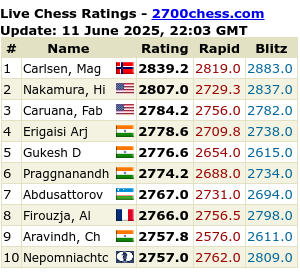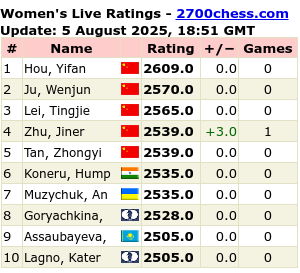
Albert Einstein, born March 14, 1879, was a theoretical physicist who is widely regarded as the greatest scientist of the 20th century. He proposed the Theory of Relativity, which greatly advanced humankind’s understanding of the universe. He also made major contributions to the development of quantum mechanics, statistical mechanics, and cosmology. He was awarded the 1921 Nobel Prize for Physics for his explanation of the photoelectric effect.
Einstein had an interest in chess. In 1936, he told a reporter that he played chess as a boy. In 1927 Einstein met Emanuel Lasker in Berlin, and they became good friends. Einstein called Lasker “a Renaissance man.”
In 1931 a pamphlet was written called “One Hundred Authors Against Einstein.” One of the authors was Emanuel Lasker. Lasker thought Einstein’s theory of relativity was wrong and that the speed of light was limited due to particles in space. Lasker did not think there was a perfect vacuum.
Einstein is quoted as saying: “Chess grips its exponent, shackling the mind and brain so that the inner freedom and independence of even the strongest character cannot remain unaffected.”
Click HERE to play through the game played in 1933 by Einstein and Oppenheimer. The link will open in a new window.
Albert Einstein (1879 C-1955) was born at Ulm in Wurttemberg, Germany, on March 14, 1879. The family moved to Munich in 1880. He may have first played chess in Munich. In 1936, he did tell a reporter that he played chess as a boy. He grew up in Munich, but left at age 15 when his parents moved to Italy in 1894. His parents then sent him to Switzerland to finish secondary school, which he completed in 1896.
In 1896 he renounced his German citizenship and enrolled in a Swiss technical school. He graduated with a teaching diploma in 1900 and became a Swiss citizen in 1901.
In 1902 he had an illegitmate daughter (Lieserl) with Mileva Maric, a Serbian classmate and mathematician. Einstein could not find a teaching post. Someone helped him get a job at the Swiss Patent Office as an assistant examiner.
He married Mileva in 1903. In 1904 his first son, Hans Albert, was born.
In 1905, at the age of 25, he received his doctorate after submitting his dissertation “On a new determination of molecular dimensions.” That same year he wrote articles on Brownian motion, the photoelectric effect, special relativity, and energy equivalency. The paper on the photoelectric effect later won him the Nobel Prize in Physics in 1921.
In 1908, Dr. Einstein was licensed in Berne, Switzerland as a teacher and lecturer. In 1910, he second son, Eduard, was born.
In 1914 he moved to Berlin as a professor at the local university and became a member of the Prussian Academy of Sciences. He also served as director of the Kaiser Wilhelm Institute of Physics.
In 1915 he presented a series of lectures on the theory of general relativity.
In 1919 he divorced Mileva and married his first cousin, Elsa Einstein. At age 43, she was 3 years older than him (he was now 40).
In 1921 he won the Nobel Prize in Physics for his work on the photoelectric effect.
In 1927 Einstein met Emanuel Lasker in Berlin and they became good friends.
In 1928 Einstein wrote to Dr. Emanuel Lasker, congratulating him on his 60th birthday, calling Lasker a Renaissance man.
In 1930 he received a patent for a new type of refrigerator.
In 1931 a pamphlet was written called One Hundred Authors Against Einstein. One of the authors was Emanuel Lasker.
Adolf Hitler came into power in 1933 and there was a nationalist hatred of Einstein, accusing him of creating “Jewish physics.” Einstein then fled Germany and was given permanent residence in the United States. He accepted a position at the Institute for Advanced Study in Princeton, New Jersey. He was 54 years old when he first arrived in the USA. The director of the Institute was Dr. Robert Oppenheimer (1904-1967). Emanuel Lasker also fled Berlin about the same time that Einstein left. Both of their homes were ransacked by the Nazis.
Einstein was an amateur chessplayer. He played chess with his neighbors and friends. He always had a chessboard set up at home. He was probably most active in chess in the late 1920s and early 1930s.
In 1934 Einstein visited friends and relaxed with a game of chess. When he met children, he asked them if they liked music or could they play chess. He would occasionally teach a child the basics of chess, then tell that child to practice, then would play that child a game of chess the next time they met.
In October, 1936 Einstein was interviewed by the New York Times. In that interview, he said, “I do not play any games. There is no time for it. When I get through work I don’t want anything which requires the working of the mind.” Einstein preferred playing the violin and sailing. Einstein did say he played chess as a boy.
In 1937, Einstein’s second wife, Elsa, died.
In 1938, Paul Nemenyi, a Jewish Hungarian scientist, fled to America and headed to Princeton to consult with Albert Einstein. He found a job working for Einstein’s son, Hans Albert, at the University of Iowa’s hydrolgy lab. There are strong indications that Nemenyi is the biological father of Bobby Fischer. He met Bobby Fischer’s mother, Regina, in 1942, at the Univesity of Colorado.
In 1939 Einstein met Dr. Edward Teller. Teller was an avid chess player, but there is no indication they played chess.
He became an American citizen in 1940 at the age of 61. He also maintained his Swiss citizenship.
He died on April 18, 1955 at the age of 76.
Einstein was a good friend of Dr. Emanuel Lasker (1868-1941). Lasker thought Einstein’s theory of relativity was wrong and that the speed of light was limited due to particles in space. Lasker did not think there was a perfect vacuum.
Einstein knew Edward Lasker (1885-1981). On one occasion, Edward Lasker visited Einstein at Princeton and gave him an autographed copy of his book Go and Gomoku, written in 1934. Einstein, in return, gave Edward Lasker an autographed copy of one of his papers on relativity. The book given to Einstein later showed up in a Baltimore used bookstore. When someone told Edward Lasker about this, Lasker replied, “That’s all right. I left his relativity paper on the subway.”
Einstein thanked Edward Lasker for his book, but then asked, “You are obviously an intelligent man; clearly a great deal of work went into this book. But why for such a trivial and unimportant topic?” Edward Lasker replied, “A friend of mine recently said the following, and I must say I agree with it: ‘We are born and we die, and in between these two events of a lifetime, there is a lot of time that must be wasted. Now, whether it is wasted by doing mathematics, practicing law, or playing games, it is really quite insignificant.'” Ed Lasker was quoting Clarence Darrow. In 1951 Einstein met a Go grandmaster from Japan and told the interpreter that he (Einstein) did not know much about Go.
Einstein is quoted as saying that “chess grips its exponent, shakling the mind and brain so that the inner freedom and independence of even the strongest character cannot remain unaffected.”
Einstein also said, “I always dislike the fierce competitive spirit embodied in [chess].”
Einstein wrote a preface to a posthumous biography of Emanuel Lasker, Emanuel Lasker, The Life of a Chess Master, published by Dr. Jacques Hannak in 1952 (written in German in 1942). Barnie Winkelman wrote to Einstein to see if he would write an introduction to Hannak’s book for an Engish edition. Einstein replied back with this foreward.
Emanuel Lasker was undoubtedly one of the most interesting people I came to know in my later years. We must be thankful to those who have penned the story of his life for this and succeeding generations. For there are few men who have had a warm interest in all the great human problems and at the same time kept their personality so uniquely independent.
I am not a chess expert and therefore not in a position to marvel at the force of mind revealed in his greatest intellectual achievement – in the field of chess. I must even confess that the struggle for power and the competitive spirit expressed in the form of an ingenious game have always been repugant to me.
I met Emanuel Lasker at the house of my old friend, Alexander Moszkowski, and came to know him well in the course of many walks in which we exchanged opinions about the most varied questions. It was a somewhat one-sided exchange, in which I received more that I gave. For it was usually more natural for this eminently productive man to shape his own thoughts than to busy himself with those of another.
To my mind, there was a tragic note in his personality, despite his fundamentally affirmative attitude towards life. The enormous psychological tension, without which nobody can be a chess master, was so deeply interwoven with chess that he could never entirely rid himself of the spirit of the game, even when he was occupied with philosophic and human problems. At the same time, it seemed to me that chess was more a profession for him than the real goal of his life. His real yearning seems to be directed towards scientific understanding and the beauty inherent only in logical creation, a beauty so enchanting that nobody who has once caught a glimpse of it can ever escape it.
Spinoza’s material existence and independence were base on the grinding of lenses; chess had an analogous role in Lasker’s life. But Spinoza was granted a better fate, because his occupation left his mind free and untroubled, while, on the other hand, the chess playing of a master ties him to the game, fetters his mind and shapes it to a certain extent so that his internal freedom and ease, no matter how strong he is, must inevitably be affected. In our conversations and in the reading of his philosophical books, I always had that feeling. Of these books, “The Philosophy of the Unattainable” interested me the most; the book is not only very original, but it also affords a deep insight into Lasker’s entire personality.
Now I must justify myself because I never considered in detail, either in writing or in our conversations, Emanuel Lasker’s critical essay on the theory of relativity. It is indeed necessary for me to say something about it here because even in his biography, which is focused on the purely human aspects, the passage which discusses the essay contains something resembling a slight reproach. Lasker’s keen analytical mind had immediately clearly recognized that the central point of the whole question is that the velocity of light (in a vacuum) is a constant. It was evident to him that, if this constancy were admitted, the relative of time could not be avoided. So what was there to do? He tried to do what Alexnder, whom historians have dubbed “the Great,” did when he cut the Gordian knot. Lasker’s attempted solution was based on the following idea: “Nobody has any immediate knowledge of how quickly light is transmitted in a complete vacuum, for even in interstellar space there is always a minimal quantity of matter present under all circimstances and what holds there is even more applicable to the most complete vacuum created by man to the best of his ability. Therefore, who has the right to deny that its velocity in a really complete vacuum is infinite?”
To answer this argument can be expressed as follows: “It is, to be sure, true that nobody has experimental knowledge of how light is transmitted in a complete vacuum. But it is as good as impossible to formulate a reasonable theory of light according to which the velocity of light is affected by minimal traces of matter which is very significant but at the same time virtuallt independent of ther density.” Before such a theory, which moreover, must harmonize with the known phenomena of optics in an almost complete vacuum, can be set up, it seems that evey physicist must wait for the solution of the above-mentioned Gordian knot – if he is not satisified with the present solution. Moral: a strong mind cannot take place of delicate fingers.
But I liked Lasker’s immovable independence, a rare human attribute, in which respect almost all, including intelligent people, are mediocrities. And so I let matteers stand that way.
I am glad that the reader will be able to get to know this strong and, at the same time, find and lovable personality from his sympathetic biography, but I am thankful for the hours of conversation which this ever striving, independent, simple man granted me.
Here is a game attributed to Albert Einstein. The game was first published in Freude am Schach (The Pleasure of Chess) by Gerhard Henschel in 1959.
Albert Einstein – J. Robert Oppenheimer, Princeton 1933
1.e4 e5 2.Nf3 Nc6 3.Bb5 a6 4.Ba4 b5 5.Bb3 Nf6 6.O-O Nxe4 7.Re1 d5 8.a4?! [8.d3] b4?! [8…Bc5] 9.d3 Nc5?! [9…Nf6] 10.Nxe5 Ne7 11.Qf3 [threatening 12.Qxf7 mate] f6? [11…Be6] 12.Qh5+! g6 13.Nxg6! hxg6 [13…Rg8 14.Nxe7+ Kd7 15.Qxd5+ Ke8 16.Qxg8] 14.Qxh8 Nxb3 15.cxb3 Qd6? [15…Kf7] 16.Bh6 Kd7 17.Bxf8 Bb7 18.Qg7 Re8 19.Nd2 c5 20.Rad1 [or 20.Re2] a5 21.Nc4! dxc4 [21…Qc7 22.Bxe7] 22.dxc4 Qxd1 23.Rxd1+ Kc8 24.Bxe7 1-0
Some (Dennis Holding) have attributed the above game to Albert Einstein’s son, Hans Albert (1904-1969), and played at Berkeley in 1945 where Hans taught. But Hans Albert did not play chess. There is no indication that Oppenheimer was in Berkeley in 1945. He was either at Los Alamos, New Mexico or Princeton, New Jersey in 1945. He was at Berkeley from 1929 to 1933.
Source: http://www.geocities.com/siliconvalley/lab/7378/einstein.htm





Lasker was just being a bitch , cos he was just a journeyman mathematician !! who hadnt the talent to invent the theories that enabled the making of atomic weapons !!Einstein liked to wear carpet slippers , while giving lectures !! … nice one !!
Mr. Einstein’s comment above, though true in one sense of
many chess enthusiasts, is merely ad hominem (a common
type of fallacy). Looking at it from this perspective, it
would seem that the best he had to offer in response to
Mr. Lasker’s “attack”, was a weak-minded attempt to “kill the messenger” (another common type of fallacy), or to belittle him.
This would be akin to Mr. Lasker pointing out that Mr. Einstein, despite his fame as a physics genius, was a mere duffer at chess– the ultimate game of abstract reasoning.
It also appears that Mr. Einstein wants to have things both ways: he calls Mr. Lasker a Renaissance Man and praises his independence of mind in the introduction to EL’s chess book, but above we see that this independence is turned ’round and used as a weapon to try and “assassinate” the message bringer, the critic of relativity.
In sum, my estimation of Mr. Einstein has sunk lower by this ill-conceived “attack”. And besides, relativity is bunk.
:>D
Hi Tony/help bot!
Interesting to read your comments! Thank you and welcome here, help bot! I do agree with you! 😉